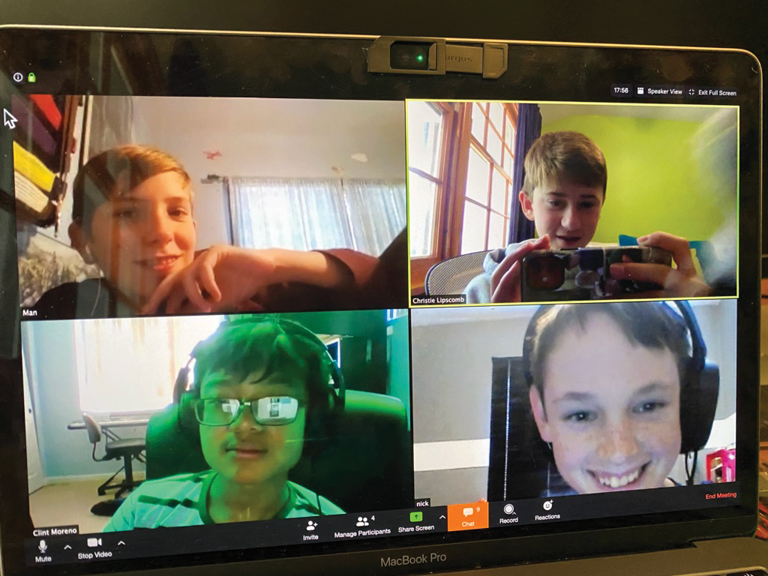
By Charly SHELTON
The COVID-19 shutdown has impacted businesses across the world due to closures of offices and stores. Some businesses are able to stay open digitally through telecommuting – meeting on a video call and/or completing normal tasks of the business on the computer at employees’ homes. This telecommuting has become the norm for millions of people around the world, including students.
Schools were closed across the country in mid-March due to social distancing rules and remain closed. For Glendale Unified School District, Friday, March 13 was the last day of school before the beginning of spring break. Schools extended the one-week recess to two weeks hoping, as many other businesses and organizations did, that the pandemic would blow over in that time. When it became clear that the shutdown would continue after the extended break, virtual learning began on March 30.
“This has been a mammoth shift in teaching and learning,” said Dr. Linda Junge, principal of Crescenta Valley High School. “It has required huge professional effort and focus from teachers to learn new platforms and technologies and to adjust as some things work and others don’t. Additionally, education is a ‘people business.’ Relationships, communication and trust are everything. This transition has definitely called on the patience and trust of our community, students and parents. We cannot express enough our appreciation for the way our community has stood beside us and supported us during this transition.”
Students have responded well, Dr. Junge said. Utilizing many different options available, from Google Classroom to Zoom to Remind, and many other free resources on the web and through recorded classes, digital packets of assignments, message boards and live instructor video calls, teachers have the ability to adapt to their students’ needs to find what works best. This brings freedom and independence, as well as more technological integration and skills that will be useful in the world’s new practices on the other side of the curve.
“For me, it’s been going really well. I like the opportunity to make your own schedule,” said Mateo White, a seventh grader at Toll Middle School.
This seems to be a welcome change at many grade levels, as stated by Xavi White, a fourth grader at Edison Elementary and the brother of Mateo.
“I like it because, like my brother said, you can just make your own schedule. I like that you can just do your thing whenever you want to, not exactly at 12 o’clock [for example],” Xavi said. “You just tell yourself when to do it and if you want to take a break you can just take a break at any time. You don’t have a teacher saying, ‘You need to do this right now.’”
This new way of educating has given flexibility and independence to students, but it comes at a price – specifically the social interaction that the students get from schoolmates and friends. This is keenly felt by many people under the “Safer-At-Home” order, but the time in school may feel even more precious to kids who are missing out on spring carnivals and graduations or even just being with friends before the summer sets in. The call to return to school seems to be getting stronger, for some, than the need for flexibility.
“At the end of the day, the collective sentiment seems to be that we all kind of want to go back [to school] at this point,” said Ernesto Aguilar, a junior at Clark Magnet High School. “Especially for us juniors and sophomores, we need to get ready for college. So we’re on the edge, we want to go back. I think that not only will it help us in the future, but we won’t miss out on the traditional high school experience. We can make those memories that the seniors are missing out on right now, dreadfully. But we’re just eager to get back. If that happens in July, I personally would be okay with it.”
With the country slowly beginning the process of reopening, it may be several weeks before schools can return to traditional classroom instruction. But with these newfound capabilities and skills acquired by all students who weathered the pandemic, it may change how school is done in the future, at least in some small ways at first.
“This pandemic has thrust us all into a shared experience that will change us in so many ways,” Dr. Junge said. “Some we can predict, like the ongoing use of technologies learned by teachers and students during this time. Others are harder to predict, like the culture of interpersonal greetings or congratulations on the graduation stage. Dr. Fauci says he would be happy for us never to shake hands again; so on the graduation stage, are we bowing? Saluting? ‘You’re awesome’ finger guns? Are we dabbing again?”
